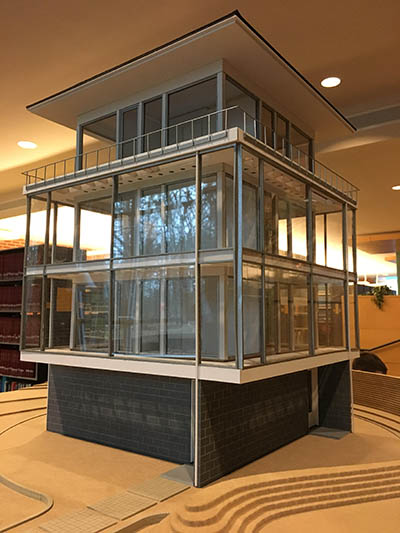A new Penn State exhibit in the Architecture and Landscape Architecture Library in the Stuckeman Family Building shows how research at the University in the 1950s influenced a passive solar design technique widely used today. “Research Wrapped in Aesthetics: The Air Wall” will be on display through May 5.

The research team has constructed a ½”=1’ model of the Air Wall Test Building, as well as several computational models, all of which help the researchers analyze different set-ups proposed by Hajjar in 1959 and better understand how this early technology compares to the technology of today.
The exhibit will include images and documents from Penn State’s libraries and archives, as well as a newly built model, all showing how Penn State faculty were among the first to explore solar design techniques intended to make the new
glass buildings more comfortable and efficient.
The current exhibit is the result of
research by an interdisciplinary team of Penn State faculty and graduate students who, in 2015, rediscovered the story of
the Air Wall when California architect
Mark Hajjar, William Hajjar’s son, gifted
his father’s architectural records to Penn State’s Special Collections Library.
The Raymond A. Bowers Program for Excellence in Design and Construction
of the Built Environment has funded the research into the history of the Air Wall
and development of computer
simulations.
Ute Poerschke, associate professor of architecture and leader of this project, was joined by research team members Henry Pisciotta, arts and architecture librarian, Moses Ling, associate professor of architectural engineering, David Goldberg, practitioner instructor in landscape architecture, Laurin Goad, doctoral candidate in art history, Mahyar Hadighi and Mina Rahimian, doctoral candidates in architecture, and Anthony Vischansky and Marie McKenna, both 2016 master of architecture graduates.
Read the entire Penn State News article about this exhibit online.

